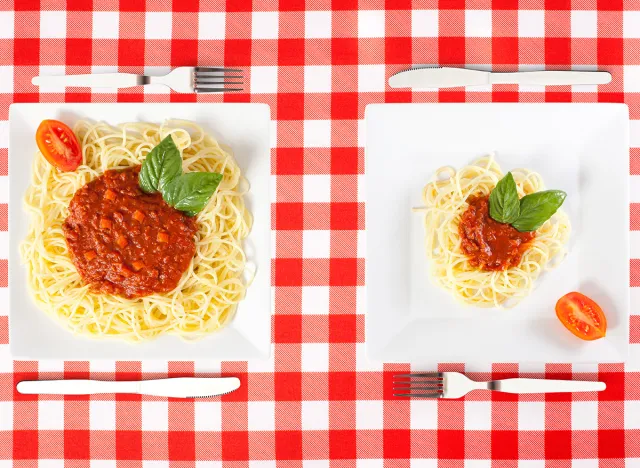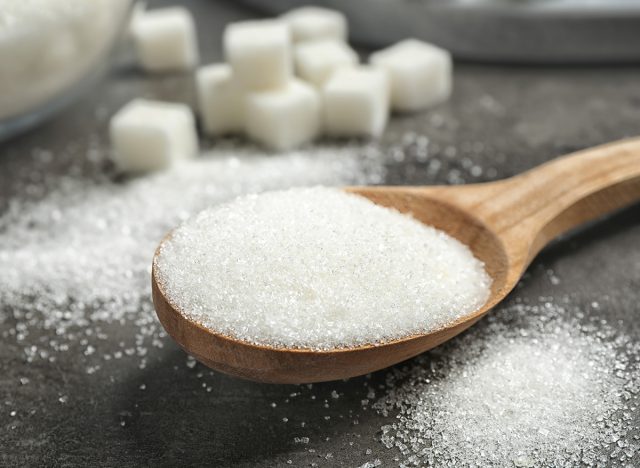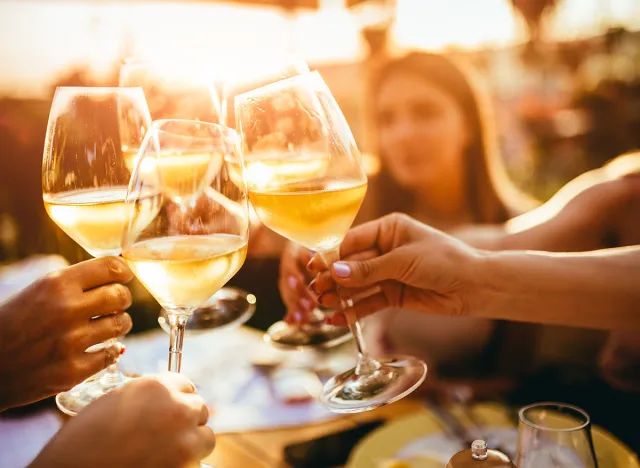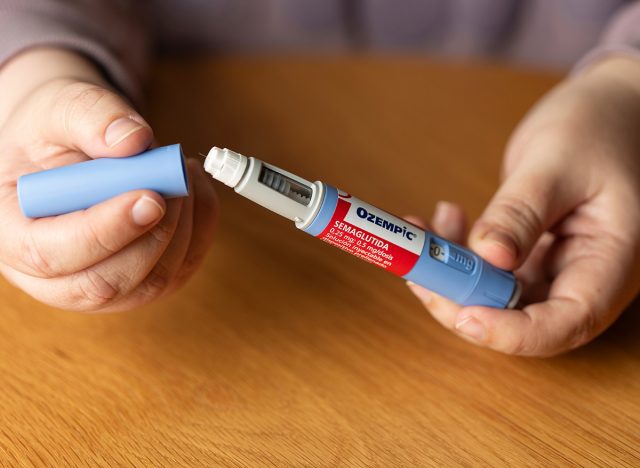8 Things You Should Never Do While on GLP-1 Meds

Are you taking—or considering taking—drugs to help with weight loss or type 2 diabetes? GLP-1 meds like Ozempic, Wegovy, and Monjaro can be very expensive, with or without a prescription. The last thing you want to do is continue behaviors or habits that may stop the meds from doing what they're supposed to, costing you time, money, and health. Here are key things never to do while on GLP-1 meds.
Not Changing Unhealthy Lifestyle

Not changing your lifestyle may undermine the GLP-1 meds' efficacy. "You can likely lose weight on semaglutide medications without changing your diet and activity behaviors, but these lifestyle changes will make the treatment more effective," Richard Siegel, MD, tells the Friedman School of Nutrition Science and Policy. "Also, we don't know if weight loss will have the same health benefits if one does not change their behaviors."
Big Portions

One of the ways GLP-1 meds work is to keep food in the stomach for longer—so be mindful of portions. "Understanding that overall portions are smaller on these medications, we want to optimize nutritional intake and consume the 'best' calories available," obesity medicine physician Dr. Christopher McGowan tells TODAY. "The focus should be on lean protein, healthy fruits and vegetables, adequate fiber, and adequate fluid intake."
RELATED: What Happens to Your Body When You Stop Taking Ozempic
No Exercise

Losing weight quickly by doing exercise may prevent you from losing lean muscle mass. Incorporate regular exercise into your routine, walk as much as possible, and try strength training to build muscle.
RELATED: I'm 52, and These 3 Tips Helped Me Shed 40+ Pounds in 6 Months
High Carb, High Fat Foods

Be careful of too many high-carb, high-fat foods while taking GLP-1 meds. "I've seen an almost dumping syndrome-like response in people taking GLP-1s when they eat simple carbohydrates and high-fat foods," Dr. Shauna Levy, a specialist in obesity medicine and medical director of the Tulane Bariatric and Weight Loss Center in New Orleans, tells TODAY.
Be Monitored By an Expert

Always talk to a medical professional before taking GLP-1 meds—especially with the risk of serious side effects. "Typically, I prescribe Ozempic for diabetes and have more often prescribed Wegovy for weight loss," endocrinologist Alyssa Dominguez, MD, tells Keck Medicine. "I have used Ozempic, sometimes, off-label for weight loss, though getting insurance approval for that can be challenging."
RELATED: 20 Possible Ozempic Side Effects
Too Much Sugar

It's not advisable to have lots of sugar while taking GLP-1 meds, Novo Nordisk, the maker of Ozempic and Wegovy, warns. "If you are taking medication to lower your sugar levels, it is advisable to avoid excess sugar consumption," Dr. Dina Peralta-Reich, MD, FAAP, FOMA, tells Parade. "Failure to watch what you eat and keep your sugar levels elevated may prevent you from seeing the intended results of the medication."
Drinking Too Much Alcohol

Watch your alcohol intake while taking GLP-1 meds—it may undermine your weight loss. "One, it's just empty calories. Two, it tends to make people make decisions that they otherwise might not make," says Dr. Levy. "It could increase hunger, and the whole point of GLP-1s, or at least one of the points, is to decrease hunger. So it sort of negates their purpose."
RELATED: 10 Worst Foods to Eat After Your Workout
No Long-Term Goals

Don't treat GLP-1 meds like a quick fix—taking them should be part of a long-term strategy to overhaul your health and your weight. "It's important to note that if you start taking either of these drugs for weight loss, your body may get used to it, establishing a new normal," says UC Davis Health. This can cause your weight to plateau. Research has shown that if you stop taking Ozempic (or Wegovy), it's likely that you will gain back the weight you lost." And if you enjoyed this article, don't miss 20 Incredible Ozempic Success Stories of All Time.




